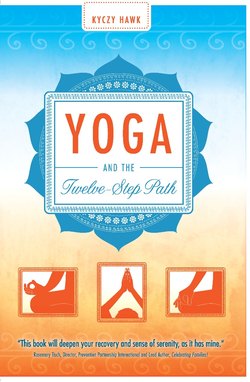Yoga and the Twelve-Step Path

Реклама. ООО «ЛитРес», ИНН: 7719571260.
Оглавление
Kyczy Hawk. Yoga and the Twelve-Step Path
Отрывок из книги
Praise for Yoga and the Twelve-Step Path
“You don’t need to be a ‘yogi’ for your recovery to benefit from this wonderful book. Kyczy Hawk shares practical strategies gleaned from years of yoga study and recovery. You will want to read, study, and practice these techniques and then share them with others in recovery. This book will deepen your recovery and sense of serenity, as it has mine.”
.....
A study of the various yogas and the limbs of raja yoga enhances, endorses, and expands the ideals that are presented in recovery meetings. In raja yoga one learns of the restraints (yamas), the observances (niyamas), breath work, letting go, contemplation, meditation, and union with one’s Higher Power in addition to the hatha practices. The various classical, well-known yogas—karma, bhakti, mantra, jnana, and raja—each relate strongly to a piece of the twelve-step recovery programs. Karma yoga is the yoga of action and consequences (Steps Four through Seven and Step Ten). Bhakti yoga is the yoga of passionate devotion to a Higher Power (Steps Two and Twelve). Mantra yoga is a yoga of sound or phrase repetition to achieve union with one’s Higher Power (prayers and sayings). Jnana yoga is the yoga of reality and study (working all the steps with a sponsor). Raja yoga is the path leading to bliss and union with the divine (the steps and traditions augmented with physical recovery). The similarities between aspects of the twelve-step programs and each of the various types of yoga allow for the practice of yoga to support recovery, while deepening and expanding on the systems of belief one learns in the rooms of recovery.
Yoga gives us specific tools to find our true selves. Breath work is critical. It is the foundation of all yogic practices, including the asana. Breathing in a deep and sustained manner has beneficial neurological effects. It can change the physical responses to a situation from an instinctual “fight-or-flight” reaction to a more measured and thought-out response. This is a vital change for people who have poor impulse control or the inability to find a mature solution to an immediate problem. Further in meditation, investigating how the mind works, how one’s own mind works, is a step in the yoga path. Are you a person who ruminates obsessively on the past? Does your mind travel into the future, anticipating events, or fantasizing about life as it could have been?
.....